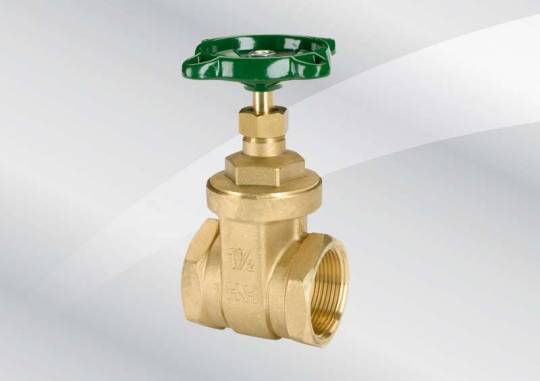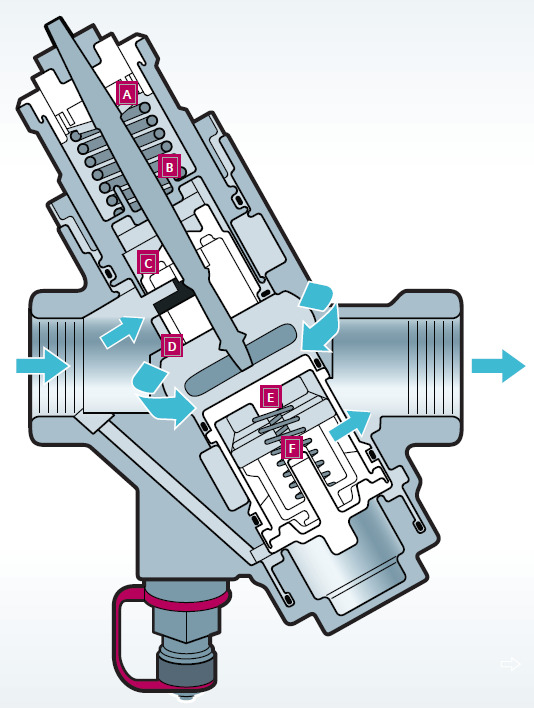#PICV Valve
Explore tagged Tumblr posts
Text
FloControlLtd
FloControl offers a comprehensive range of valves, pipeline products, and highly engineered pre-assembled system solutions for fluid handling applications within the UK building services industry. We provide the most innovative PICVs, ABVs, DPCVs, pre-assembled Valve Set arrangements, and Manifolds plus a full range of ancillary products, sourced from world-class manufacturers. Our products and solutions provide superior environmental comfort whilst reducing the capital, installation, commissioning, and running cost of heating and cooling systems as well as reducing a building’s carbon footprint.
#Commissioning Valve Set#Butterfly Valves#Actuated Butterfly Valve#PICV Installation#Valve Package for FCU#FCU Actuator Valve#AHU Valve Package#ABV Valve#Double Regulating Valves#PICV Valve#Automatic Balancing Valve#DRV Valve Function
0 notes
Text
#anbionline#valves#WATTS VAL-Kit#WATTS#VAL-Kit – PICV Kit for Fan Coil Units#VAL-Kit#PICV Kit for Fan Coil Units#PICV
1 note
·
View note
Text

The past 10 years FloControl have supplied the most compact pre-assembled FCU PICV Valve Set to mount directly onto fan coil units from any manufacturer. We are able to offer PICV Valve Arrangements with a variety of system connections and features including strainers, automatic air vents, flushing valves and drain, fully compliant with BRSRIA BG29/21. The PICV Valve Arrangement includes the innovative 3 in 1 FlowCon PICV and actuator, designed to use full stroke control with 41 maximum flow rate settings per valve type, altogether covering flow rates from 0.00482 – 0.736 l/s, suitable for heating and cooling applications [-20°C to +120°C].
Product Features
Flushing By-Pass assembly on 40mm centres to fit over extended drip tray.
Vertically or horizontally configured.
Blank cap for flushing through the assembly.
PT Plug & Combined PT Plug & Drain on PICV to aide system balancing.
Removable PICV Insert for flushing and easy replacement.
FCU connections included as standard.
A wide selection of system and flexible hose connections available.
Union connections at all joints for easy valve alignment and removal.
Strainer, Flow Measurement, Union Drain valves off the shelf.
Wide range of Electric and Thermal Actuators.
Labelled, cross-referenced to the schedule, terminal unit and location in the building.
0 notes
Text
Valves and Plumbing Dubai
Valves and Plumbing in UAE, Dubai Company, Established in 1998 in UAE, Technoflow is dedicated to provide HVAC and Plumbing products and experts services at competitive price. The ability to adapt to the dynamic changes in the region with its ever growing challenges and demands made Techno flow one of the Best Supplier for the demanding MEP industry.
Technoflow operates in the GCC regions (UAE and Qatar)
Our deliberate partnership with the Global brands (Manufacturers) worldwide coupled with our passion for excellence has culminated in supplying many iconic projects, developing excellent relationships with well-known contractors and consultants in the GCC.
Technoflow main activities are all linked to the construction industry. Our wide portfolio consist of HVAC / Plumbing Valves, PICVS,BMS Control Systems, BTU Meters, Smart Valves, District Cooling Plant.

Now let us talk about Valve Item and what is the profit for it:
Valves are mechanical devices designed to control the flow of fluids (liquids, gases, or slurries) within a system. They are crucial components in various industries, including manufacturing, oil and gas, water management, pharmaceuticals, and more. Valves regulate, direct, or control the flow by opening, closing, or partially obstructing passageways.
Here are some common types of valves:
Gate Valves: These valves use a gate or wedge-shaped disc to control the flow. They are either fully open or fully closed, providing a tight seal. Gate valves are commonly used in applications where a straight-line flow and minimal restriction are required.
Ball Valves: These valves use a spherical disc (a ball) to control flow. They have a quick on/off operation and are well-suited for applications that require frequent operation.
Butterfly Valves: Butterfly valves have a flat disc that rotates 90 degrees to regulate flow. They are compact and often used in large-diameter applications where space is a concern.
Check Valves: Check valves allow flow in one direction and prevent backflow. They are commonly used to prevent the reversal of flow in pipelines.
Globe Valves: These valves have a movable plug or disc that moves against or away from the flow opening. They are suitable for applications that require throttling and regulation of flow.
Pressure Relief Valves: These valves automatically release pressure when it exceeds a preset limit, safeguarding equipment and systems from overpressure.
Control Valves: Control valves manage the flow rate of fluids by varying the size of the flow passage through the valve in response to signals.
Valves come in various sizes, designs, and materials to suit different applications and operating conditions. The selection of a valve depends on factors such as the type of fluid, pressure, temperature, flow rate, and intended purpose within a system.
#valves#plumbing#valves dubai#tfl valvesreeftech#valvesreeftech#plumbing suppliers dubai#tfl valves item#technoflow valves
0 notes
Text
F.A.Q. PICV valves
F.A.Q. PICV valves FREQUENTLY ASKED QUESTIONS about PICV valves. Including how they work and how to implement them in design and commissioning. #hvac #valve #picvvalve #hvaccontrol
FREQUENTLY ASKED QUESTIONS about PICV valves. Also there is another article about how PICV works and it’s advantages in this link. GENERAL VALVE QUESTIONS How PICVs work? Hot/chilled water or 50% water-glycol solutions in closed loop systems enter the valve and pass through a variable rectangular adjustable flow limiter (C) that is connected to the ring with the dial (A) for presetting the…

View On WordPress
#Are PICV suitable for dirty water and is there any PICV which endures with dirty water?#Can a PICV be used with a 2-port control valve?#Can I install a 4-port control valve as end-of-line by-pass with no PICV?#Can I install electric actuators on PICV?#Can I install PICV on drinking water systems and open circuits?#Can I measure the flow rate across a PICV?#Can I optimise pump operating speed with a PICV?#Can PICV be backflushed/reverse flushed?#Can PICV be installed in series?#Do I have to install other balancing and control valve along with PICV?#How can I calculate the pressure drop across a PICV?#How can I calculate the valve authority?#How can I maintain a PICV?#How can I size PICV?#How do I know if the PICV is working?#how do picv valves work#how does picv valve work#how picv valve works#how to select picv valve#how to size a picv valve#para qué sirve la valvula pcv#qué es el pcv valve#Should I install a flow measurment device to each unit?#Should I install Double Regulating Valve (DRV) at risers?#Should strainer be fitted upstream a PICV?#what are picv valves#What are the available certifications for PICV?#What are the two test points for on a PICV?#What do full stroke and reduced stroke mean?#what does a picv valve do
0 notes
Photo

Pressure Independent Control Valves (PICV) Market Trends, Drivers, Strategies, Applications and Competitive Landscape 2024 Pressure Independent Control Valves (PICV) Market Report Pro Market Statistics published a new research publication on “
0 notes
Link
Pressure independent control valves are an automatic temperature control valve and an automatic flow regulating valve packaged in one valve body. A ball valve with a characterized insert performs as a regular actuated temperature control valve, and a pressure control cartridge provides automatic flow regulation to maintain a constant flow of hot or chilled water regardless of system pressure changes.
0 notes
Link
0 notes
Text
Top Advantages of the PICV Valve Function in Residential Systems
When I first learned about the PICV valve, I was amazed at how this tiny yet powerful component could revolutionize residential HVAC systems. If you’re like me, you’re probably looking for ways to improve your home’s energy efficiency and comfort. Let me share what I’ve discovered about the PICV valve function and why it’s a game-changer for homeowners like us.What is a PICV Valve?
A Pressure Independent Control Valve (PICV) is a smart device designed to regulate water flow in heating and cooling systems. Unlike traditional valves, the PICV automatically adjusts to maintain a steady flow, ensuring optimal system performance. This means less manual intervention and more consistent results for your home’s HVAC setup.
0 notes
Text

HERZ PIBCV DZR Body FT With Test Points PN25
1 note
·
View note
Text

Our curated range of energy products valves in particular, covers mechanical as well as electric Smart Valve options from the world’s most credible Smart Valve suppliers FlowCon and Belimo. Energy control valve (smart control valve) applications
Coil optimisation based on flow rate and temperature differential
Remote setting and monitoring of smart control valves
Water quality monitoring
The FlowCon Energy FIT System includes: A FlowCon SM PICV (1/2? – 2?, threaded), (65-250mm, flanged)
FIT.1 = 1/2" – 1" PN25 (0.176-0.685 l/s)
FIT.2 = 1" – 2" PN25 (0.513-2.34 l/s)
FIT.3 = 65-80mm PN40 (1.48-9.89 l/s)
FIT.4 = 80-10mm PN40 (3.49-20.2 l/s)
FIT.5 = 125-150mm PN40 (6.48-29.5 l/s)
FIT.6 = 200-250mm PN40 (9.21-76.8 l/s)
0 notes
Link
Automatic Pressure Independent Control Valve of Honeywell Buildings with integrated flow control and temperature control functions with reduced energy costs.
0 notes
Text
Valve sizing and actuator selection
Valve sizing and actuator selection In this guide, you will be provided with the 18 steps on how to properly size and select valves, actuators and assemblies. #hvac #picv #valve #flowrate #calculation
There are a couple of engineering design questions that need to be answered in order to help maintain design intent of the system. In this guide, you will be provided with the 18 steps on how to properly size and select valves, actuators and assemblies. A Pressure Independent Control Valve 1. Determine valve type. Knowing this upfront will enable us to make adjustments in our sizing and…

View On WordPress
0 notes
Text
What are control valves and how they operate?
The control valve is an industrial valve whose main task is to control the flow of fluid. Depending on the type of construction, the control valve is resistant to a certain amount of pressure, temperature, mechanical shock and corrosion. In the following, we will review the general applications of the control valve. Join us.
What are Control Valves?
Control Valves have been designed to control and regulate pressure and flow rate. They can automatically do the job and eliminate the need for you to constantly keep an eye on the system. You can choose the correct control valve for the specific desired pressure.
The opening or closing of automatic control valves is usually done by electrical, hydraulic or pneumatic actuators. Normally with a modulating valve, which can be set to any position between fully open and fully closed, valve positioners are used to ensure the valve attains the desired degree of opening. see more

The main goals of different control valve parts:
The main functions of control valves are flow regulation, flow stop and direction and pressure regulation. Depending on the activity, you can choose the right control valve. The primary purposes of the control valve are:
Controlling the flow direction
Relieve the system from specific pressures
Increase or decrease the flow
Turn the flow on or off
Regulating the flow or process pressure
Pressure independent control valves (PICVs) improve system performance and optimize delta-T resulting in less pumping energy and contributing to more efficient loading of boilers and chillers. Siemens pressure independent control valves integrate three functions into a single device: control valve, adjustable flow limiter, and automatic pressure regulator. The automatic pressure regulator dynamically balances the circuit by maintaining a consistent flow through the valve when differential pressure changes. Siemens pressure independent control valves have the unique advantage of always maintaining their full stroke, regardless of the maximum adjustable flow setting, to provide better control.
more information

The final goal of different control valve types
benefits of Pressure independent control valves:
Optimized performance for greater energy savings
Longer reliability due to fewer repositions
Smaller footprint
click here

At linquip, we provide you with up-to-date and complete information about different types of control valves, its various parts and its applications. So, to answer your questions about control valves, visit our website.
References:
https://www.linquip.com/blog/control-valves-101-guide-to-understand/
Wikipedia
Siemens
0 notes